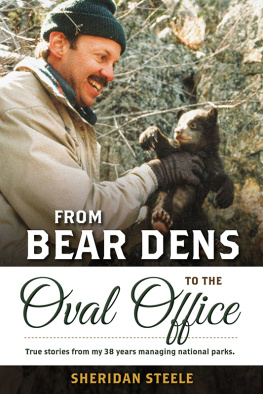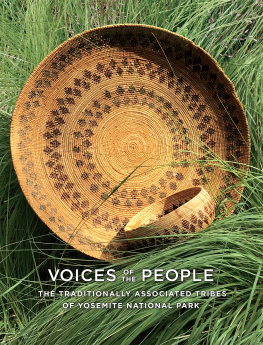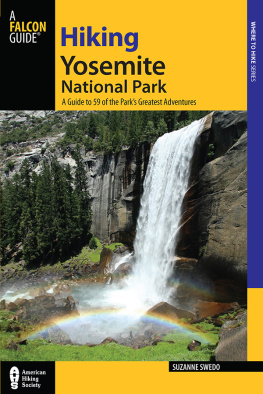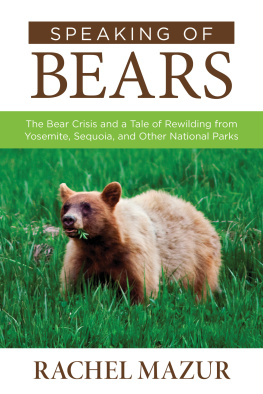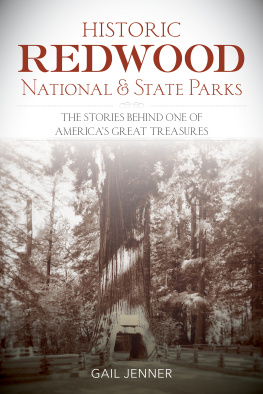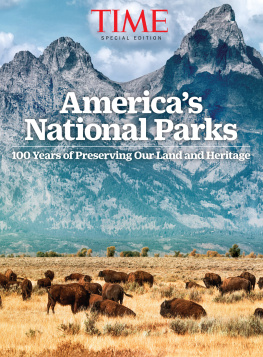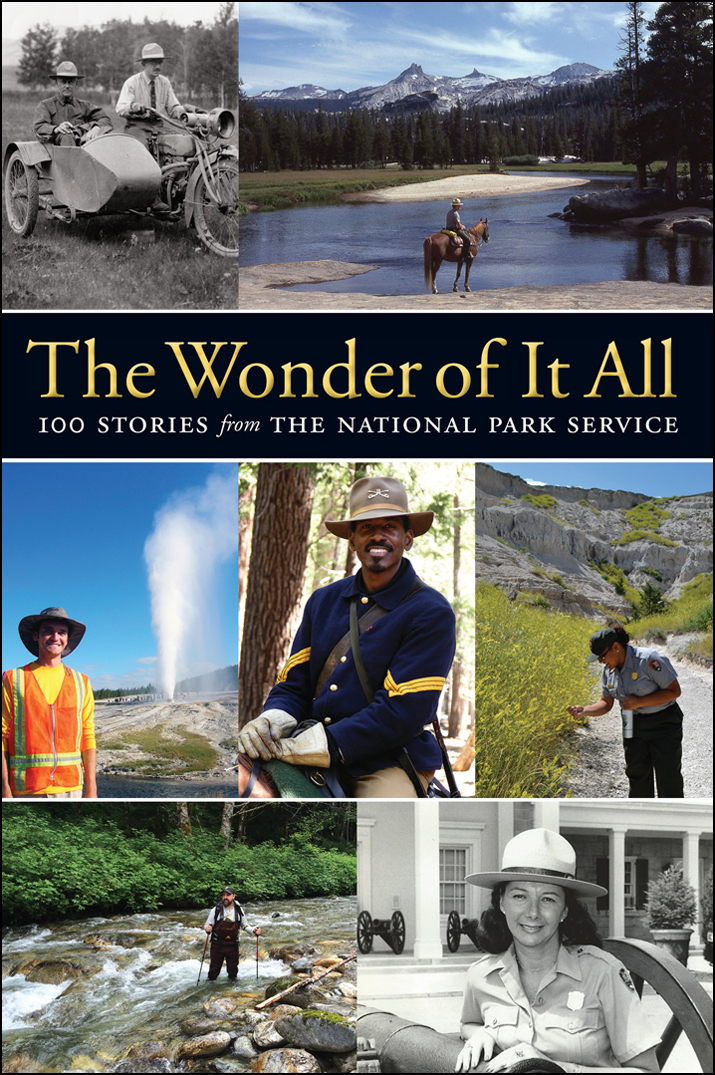

The views and opinions of the authors or any federal employee interviewed for this book do not state or reflect those of the United States government. Any reference within the book to any specific commercial products, process, or service by trade name, trademark, manufacturer, or otherwise does not constitute or imply its endorsement, recommendation, or favoring by the United States government. The publisher has purposefully preserved each authors voice, and slight variations in style are intentional.
Individual contributions copyright 2016 by the individual authors.
The design and layout of this book are the property of Yosemite Conservancy.
The following titles have been previously published in slightly revised form. Permission to reprint has been granted by the authors: A Good Old-Fashioned Mountain Rescue by Jane Marie Allen Farmer; Black Canyon: A Wild Landscape of Hope by Paul Zaenger; I Still See Her by Chris Tarbrush Jannini; Im Proud of What We Did by Ed Rizzotto; Message in a Bottle by Jenna B. Sammartino; Why Wilderness? by Mike Reynolds; and Yosemite Is My Backyard by Bob Roney.
Permission to reprint My Role Was to Listen by Dick Martin granted by Ranger magazine. My Role Was to Listen by Dick Martin and Im Proud of What We Did by Ed Rizzotto are part of the Association of National Park Rangers Oral History Project. Learn more at https://aonpr29.wildapricot.org.
Source notes and credits can be found on page 297 and following.
Title page photo: Yosemite National Park, 1982. Ranger Tom Habecker and Otis patrol
Tuolumne Meadows, with Cockscomb and Unicorn Peaks in the distance.
Additional thanks are due to Tom Habecker for the title of this book.
Published in the United States by Yosemite Conservancy. All rights reserved. No portion of this work may be reproduced or transmitted in any form without the written permission of the publisher, except in the case of brief quotations embodied in critical articles or reviews.

yosemiteconservancy.org
Library of Congress Control Number: 2015947645
Cover and book design by Nancy Austin
ISBN 978-1-930238-70-1
All materials are from sustainable sources.
Table of Contents
Guide

CONTENTS

BY Jon Jarvis
BY Dayton Duncan

The Yosemite, the Yellowstone, the Grand Canyon are national properties in which every citizen has a vested interest; they belong as much to the man of Massachusetts, of Michigan, of Florida, as they do to the people of California, of Wyoming, and of Arizona.
STEPHEN MATHER, FOUNDING DIRECTOR OF THE NATIONAL PARK SERVICE, 1920



S tanding before many large, tattooed Hawaiian men bearing shark-toothed war clubs, feeling rather vulnerable in the lavalava I was wearing (which is little more than a six-foot-long wedgie), I had the honor of being chanted into the circle for the annual ava (kava) ceremony at Puukohol Heiau National Historic Site on the big island of Hawaii. This is the place where King Kamehameha united the islands for the first time, and it is still the center for passionate discussions of Native Hawaiian sovereignty. After hours of singing, chanting, dances, and many coconut-shell cups of the mouth-numbing kava elixir, I was asked to speak before the traditionally dressed group. I said I was both honored and humbled by the responsibility to care for these sacred places, which are not only important for their history but also for their inspirational and cultural value. I said we of the National Park Service are the stewards of the place, but it is our partnership with Native Hawaiians that keeps the stories alive over the centuries. I said we commit to carrying this place and its story into perpetuity. At the end of the ceremony, a man came to me and thanked me; and to seal the deal in the Hawaiian way, we touched foreheads and shared our breath.
National Park Service employees and our many park friends are, at our core, storytellers through place. I have said many times that we must speak for three entities that have no voice: the people of the past, the children of the future, and nature itself. They deserve to be heard, for our actions affect how the past will be remembered, what the future generations will inherit, and how our planet will be treated. Our most powerful tool is story, told with passion and intelligence on the ground where the story emerged. We shoulder the task of understanding these stories from a scientific and scholarly foundation, and must present them, without bias, to a listening public, hoping they will go home with a better understanding and a deeper passion for the past, future, and our environment.
Like my colleagues in the National Park Service and the contributors to this book, we gather our own stories from moving experiences. It can be an encounter with a visitor, especially a child, whose curiosity and wonder are ignited by our skill at showing them the natural world. It can be the act of standing in a place of history, on the bloody fields of the Civil War, or at Thomas Jeffersons desk, feeling the chill of being in the spot that shaped our countrys independence. It can be the edge of an arroyo, with the canyon wren trilling as the sun settles into the desert. It can be a mountain forest, where the only sound is the soft shush of falling snowflakes. These moments accumulate in us, they give us strengththey reinforce our resolve that these parks need us. And when we share these stories, they build our nations commitment to the preservation of our national parks for the enjoyment of future generations.
This book is dedicated to inspiring stories from inspiring placesfrom the past, and for the next one hundred years and beyond. We invite you to find your park and create your own stories.
Jon Jarvis
Jonathan B. Jarvis has worked for the National Park Service for thirty-eight years. He is its eighteenth director.




